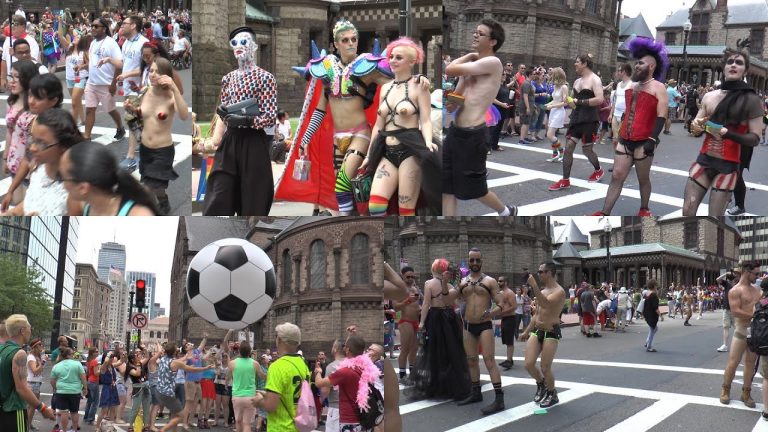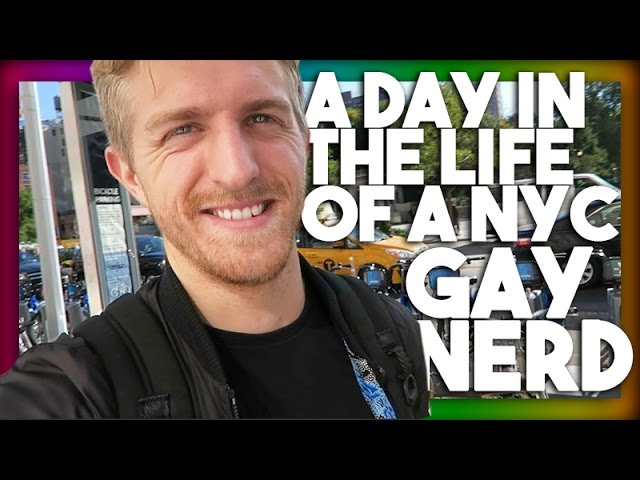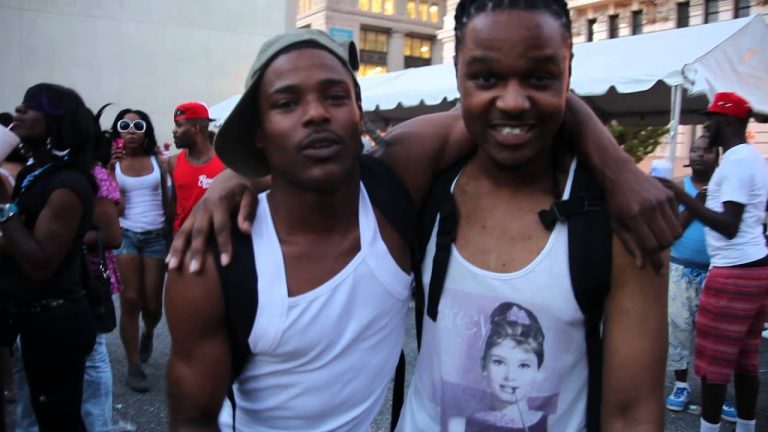One of the nation’s gay-friendliest cities, Boston encompasses a range of charms
With its tree-lined streets, spectacular gardens, and youthful yet intellectual personality, Boston’s an easy city to love in the springtime. Winters last a while in New England’s largest metropolis, but by May the sidewalks buzz with pedestrian life and the Charles River fills with kayaks and sailboats. One of the nation’s gay-friendliest cities, Boston encompasses a considerable range of charms, from prestigious museums and historic parks to swish cocktail lounges and hipster-infested restaurants. Here’s a look at eight different ways to take advantage of Boston’s myriad attributes:
1. Have breakfast or brunch in Jamaica Plain
Once considered an out-of-the-way neighborhood whose shops and restaurants catered chiefly to locals, the lesbian-popular Jamaica Plain neighborhood has grown up in recent years, especially as a culinary destination. It’s not far from lovely Back Bay Fens Park and its esteemed art museums, and has several fine restaurants specializing in breakfast or brunch, making it an apt spot to begin your day.
The longtime traditional favorite for breakfast is Sorella’s, a small and bustling diner-style cafe that’s justly renowned for its omelets stuffed with goat cheese, chorizo, and similarly enticing ingredients. A bit more dapper and elegant inside, the French bistro Bon Savor serves up such delicious breakfast dishes as fried-banana crepes and smoked salmon eggs Benedict. And don’t overlook the airy Dogwood Cafe, with its hardwood floors, exposed-brick walls, and creative cuisine. Consider the blueberry buttermilk pancakes or the unusual-sounding but delicious “breakfast pizza” topped with scrambled eggs, breakfast sausage, applewood-smoked bacon, home fries, and mozzarella.
2. Wander through Back Bay Fens Park and explore the city’s two best art museums
North of Jamaica Plain and west of downtown Boston is the Fens, an amalgam of relatively modest residential and slightly scruffy industrial blocks and site of the campuses of Northeastern and Boston universities as well as Fenway Park, home to baseball’s Boston Red Sox.
The topographical feature that best defines the neighborhood, however, is Back Bay Fens Park, the city’s only area of tidal marshlands that was never filled in with gravel as Boston expanded. Landscape architect Frederick Law Olmsted converted this wilderness into a subtly manicured park. On its south side is the Museum of Fine Arts, whose highlights include Asiatic art and French Impressionists. To the west is the Isabella Stewart Gardner Museum, a stunning if idiosyncratic collection of paintings, drawings, textiles, and furniture (mostly Western European).
3. Stroll the Boston Common
The Boston Common has been the city hub since 1630. The side of the park fringed by Boylston and Tremont streets is more commercial than the stretch along stately Beacon Street, but the whole park merits exploration. The adjacent Boston Public Garden, the centerpiece of which is a placid pond traversed in summer by foot pedal-powered swan boats, also contains several acres of formal gardens. Overlooking the Common stands Charles Bulfinch’s golden-domed neoclassical State House, where legislation was signed making the Bay State the first (and so far only) one in the Union to legalize same-sex marriage.
One of the nation’s earliest urban residential neighborhoods, nearby Beacon Hill was settled in the early 1800s by the city’s wealthiest merchants and is today the domain of brick sidewalks, stately town houses, shade trees, and boutiques (the best are on Charles Street.).
4. Hit the shops and galleries along Newbury Street in the Back Bay
The relatively young Back Bay (a tidal flat before the 1860s) – with its broad avenues of four-story town houses, its grid layout, and its bustle of sidewalk cafes and swank boutiques – recalls Paris. It’s still one of Boston’s preeminent residential (and favorite walking) neighborhoods. Beacon and Marlborough streets are predominantly residential and contain impressive single-family homes. Commonwealth Avenue is divided by a gracious grassy mall. The best area for whiling away an afternoon is Newbury Street, which is lined with offbeat boutiques and stylish eateries that range from high-end, up by the Public Garden, to funky and somewhat collegiate, down toward Massachusetts Avenue.
5. Explore Harvard Yard
Puritans settled Cambridge, just across the Charles River from Boston, in 1630 and soon after founded America’s first university, Harvard, now a top tourist draw. Walking tours of campus are given daily and focus heavily on tree-shaded Harvard Yard. From here you’re steps from such vaunted cultural institutions as the Widener Library, with the country’s second-largest book collection; the Fogg Art Museum, whose 80,000 holdings concentrate mostly on European and American painting; the Arthur M. Sackler Museum, which emphasizes Asiatic, ancient Greek and Roman, and Egyptian, Buddhist, and Islamic art; and the mammoth Harvard University Museums of Cultural and Natural History.
Dozens of shops and eateries line the streets around Harvard Square (where Massachusetts Avenue and John F. Kennedy Street intersect). Finish up your exploring with a scoop of the amazingly thick and delicious ice cream at Herrell’s, which is known for such flavors as malted vanilla, chocolate pudding, and cookie-dough peanut-butter swirl.
6. Have a progressive dinner along Tremont Street in the South End
Gentrified steadily over the past two decades, Boston’s gay-popular South End neighborhood has become one of the East Coast’s great dining destinations, and it’s difficult to narrow down the many fine choices to just a few. A solution to this dilemma is to plan a leisurely, progressive dinner at three South End restaurants, sampling one or two dishes at each place. Start at one of the neighborhood’s first restaurants to earn major acclaim, Hamersley’s Bistro, where you won’t go wrong with either the crispy duck confit with beet-walnut salad, or the spicy halibut and clam roast with bacon-braised greens.
Next, venture a few doors down to Aquitaine, where you might sample house-cured salmon with creme fraiche and pomegranate, or tender braised pork with mashed celery root and sauteed spinach. Be warned: This beautiful-peopled yet surprisingly low-key bistro is often packed. Enjoy your final dining course at the cozy and gay-popular Franklin Cafe, which is open late and serves terrific seasonal contemporary fare. You might tuck into a plate of garlic-grilled calamari with white beans and basil pesto, or the sunflower-crusted chicken with chive-mashed potatoes and tarragon jus.
7. Go bar-hopping in the South End
The South End is home to three of the city’s longest-running and most popular gay bars, making it a favorite neighborhood for barflies. Club Cafe draws the most mixed-gender crowd and is also home to an excellent restaurant. It’s largely the domain of smartly dressed professionals – there’s a sophisticated cocktail lounge-cabaret that gets busy after work, and a larger, cruisier (though more attitude-y) video bar in back.
Long ago a fixture of the city’s leather scene, the Boston Eagle has gradually shifted into a more laid-back but fiercely popular cruise-and-chat bar with a mostly male crowd of guys in their 30s and 40s. This intimate, if cramped, tavern is justly known for its cheap and potent cocktails. Finally, the dapper-looking Fritz bar is often described as Boston’s gay Cheers – it’s busiest around happy hour and on Sunday afternoons.
8. Stay in a hip boutique hotel
In addition to the usual chains and several gay-friendly B&Bs, Boston has several snazzy little boutique hotels that have a strong following among gay travelers. There are three outposts of the gay-friendly (and pet-welcoming) Kimpton Group, including the stately Nine Zero, overlooking Boston Common, which is home to the opulent KO Prime steakhouse and contains 190 units furnished with super-cushy bedding, luxe bath amenities, and mini-bars stocked with unusual goodies. Smaller and containing 112 rooms outfitted with red-suede chairs and custom-designed desks, the Onyx Hotel exudes warmth and luxury.
Just across the river in Cambridge, consider Kimpton’s supremely inviting Hotel Marlowe, whose 236 handsomely furnished rooms have animal-print carpets and opulent velvet fabrics. Guests can use bikes and kayaks (to paddle on the Charles River, just outside the door) for free. If you get a chance, grab dinner at the fabulous Bambara restaurant, which serves superb regional American fare to a sexy, see-and-be-seen crowd.
Related: Weekend in Boston’s South End






